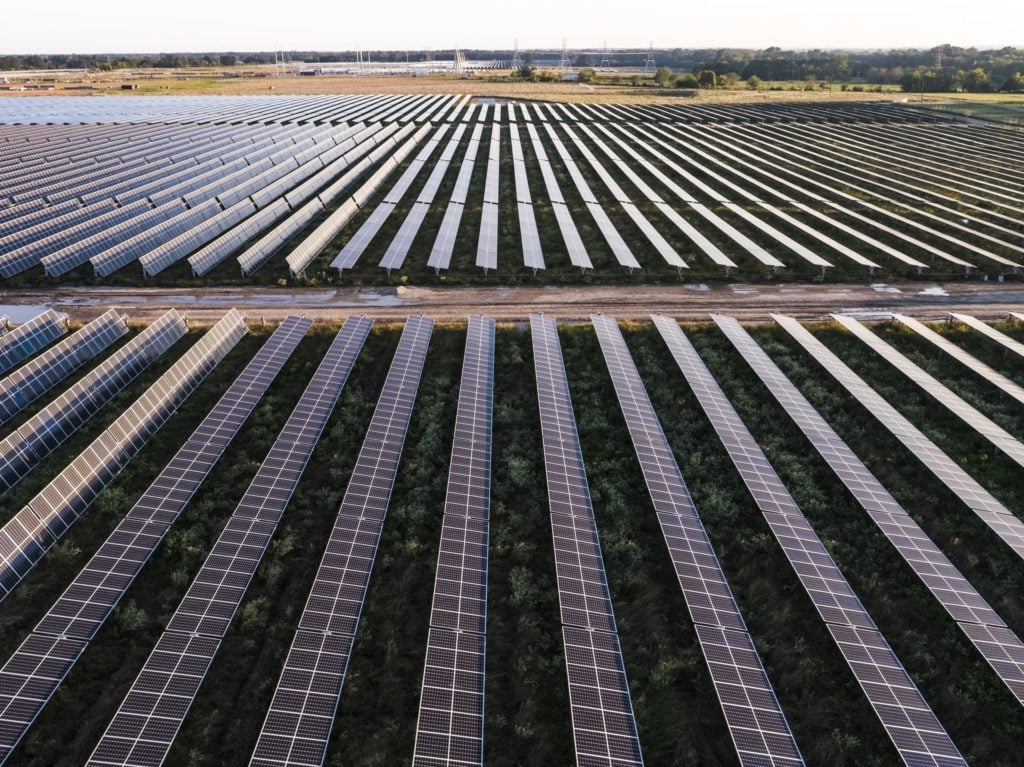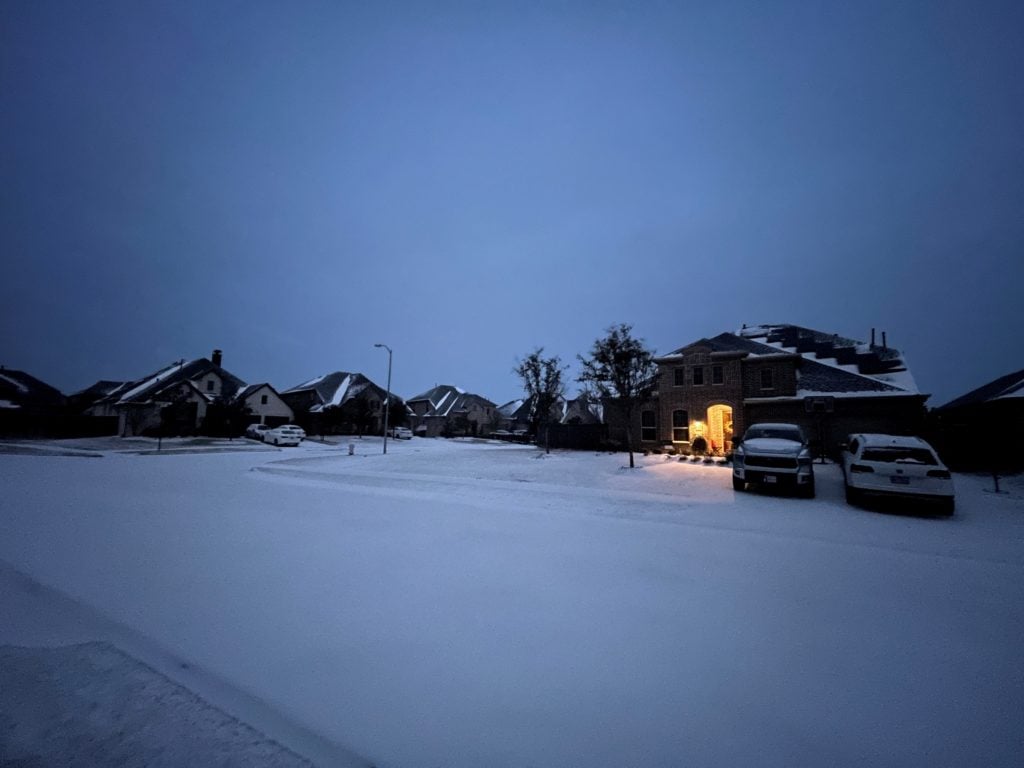
The generational winter storm which is currently affecting large parts of the US, but perhaps most prominently Texas, has drawn attention to power supply, grid operator ERCOT and the role renewables has, or evidently has not, played in causing widespread blackouts.
There have been numerous reports and suggestions in corners of the media that renewables have if not caused, then certainly exacerbated grid electricity performance in Texas throughout the winter storm. However, data pulled from the Electric Reliability Council of Texas (ERCOT) has demonstrated that the power shortfall has been primarily caused by a stark drop in thermal generation, with up to 31GW of capacity out of action on the morning of Tuesday 16 February. Meanwhile wind, which has borne the brunt of attacks in the media, was responsible for a shortfall of around 2GW. Solar, meanwhile, produced greater quantities of power than was expected.
Unlock unlimited access for 12 whole months of distinctive global analysis
Photovoltaics International is now included.
- Regular insight and analysis of the industry’s biggest developments
- In-depth interviews with the industry’s leading figures
- Unlimited digital access to the PV Tech Power journal catalogue
- Unlimited digital access to the Photovoltaics International journal catalogue
- Access to more than 1,000 technical papers
- Discounts on Solar Media’s portfolio of events, in-person and virtual
Wind power is currently producing about 4,000 MW, or 2/3 of the ~6,000 MW that ERCOT was counting on wind to contribute during winter peaking events. Solar is coming online now and helping during daytime, exceeding the <300 MW it is counted on for in system planning. pic.twitter.com/51VkbEHDZF
— JesseJenkins (@JesseJenkins) February 16, 2021
Indeed, an analysis of the data presented by US trade body the Solar Energy Industries Alliance (SEIA) published on Wednesday 17 February illustrated how in the three days following 13 February, thermal power plant output was down 25% while renewables output was down just 1%.
This drop in power supply has forced ERCOT to shut off large swathes of the grid – essentially forcing black outs – to prevent a widespread grid collapse. The result has been millions left without power, some for as long as three days, all the while temperatures in the state dropped to as low as -11 degrees Celsius.
The causes, ramifications and potential remedies for preventing future events from happening, even if winter storms such as this are generational events, will likely be discussed at length in the months to come. But there are ample conclusions to draw from performance data and anecdotal evidence from solar generators of all scales that the technology can prove a working solution and play a pivotal role in helping ease the consequences of such events.
How are solar assets performing?
Generators in Texas have been curtailed for various reasons. While some wind turbines have indeed been taken off the grid due to frozen turbines and other power equipment – some turbines having not been as weather-proofed as others – thermal generators stopped after coal piles were frozen solid, and nuclear generators in the state were also taken offline due to the risk posed to critical equipment by the cold weather.
Evidence has, however, suggested that solar assets in the state have continued to operate and provide power. Lightsource BP owns and operates a solar asset in Texas, a 260MWdc facility in Lamar County, just over 100 miles north east of Dallas. In a statement issued to PV Tech, the company said Impact had continued to generate electricity throughout the winter storm, and was operational – as normal – between 8am and 6pm over the course of last weekend. In addition, Lightsource BP said the site operated at up to 80% of its maximum output on Monday 15 February despite operating conditions.
The power generated was supplied to the ERCOT grid and used by the system operator to serve critical loads, and between 10 – 16 February, delivered more than 3.6 million kilowatt-hours of power to the state.
Engie North America also confirmed in a statement issued to PV Tech that its solar projects in the state have continued to provide power as expected, adding that its employees are “dedicated to ensuring that this critical resource is online and contributing its maximum potential to the ERCOT system.”
Self-generation and supply

Residential solar, and indeed energy storage solutions, have also played a pivotal role during the winter storm. Residential solar installer Sunrun told PV Tech that it has installed thousands of rooftop solar systems in the state so far, equivalent to more than 300MW, all of which enabled customers to self-generate and consume power while grid blackouts were occurring. Hundreds of these have additional domestic energy storage systems as well, enabling them to maintain power throughout the extreme weather.
The obvious benefit of being able to safely generate, store and use your own power while the grid is down has also had an impact on the popularity of solar. Sunrun said it had recorded a 350% spike in online traffic to its website from within Texas this past week.
Solar households were also spared from the impact of huge fluctuations in the price of power, with wholesale prices spiking to record amounts on the back of supply and demand issues. Having hovered around US$30 – 50/MWh before the event, prices soared to as high as US$12,000/MWh in certain settlement periods as generators crashed off the system and demand peaked.
Furthermore, taking these consumers off the grid’s demand books, if only for a short period, would feasibly make it easier for the state to restore power. “Every megawatt was important [this week]. But looking forward, we can provide even more benefits to the Texas grid,” a spokesperson for Sunrun said.
Lessons to be learned
However, solar and storage could have achieved much more, and stands ready to in the future. Sunrun said regulators and policymakers in the state now have an opportunity – and a responsibility – to expedite ways to allow solar and storage to be called upon as power resource at times of system stress, as they are in other international markets.
“We are ready, and well suited to the call – in a similar way to our virtual power plant programs. Sunrun encourages Texas regulators and policymakers to create pathways for customer-sited solar and storage to add even more benefits to the grid. With emergency rules, ERCOT and the Public Utility Commission of Texas should create a docket to create these pathways or pilot for aggregated behind the meter solar+batteries to provide needed power and grid services to increase the reliability for all customers. These solutions will maximise market-driven solutions, and increase reliability for Texans with efficient and low-cost solutions. We look forward to working with leaders to be part of solutions coming out of this crisis.”
While the debate over who or which technology class is more to blame for power shutdowns in Texas looks all but set to continue, perhaps the most notable conclusion to draw is that while events like these are generational, they do expose a failure of planning and infrastructure investment. And with the effects of climate change only likely to increase the frequency of such weather events, that forward planning and investment in grid infrastructure will become all the more vital.
A more holistic, whole system approach to grid design is vital, with renewables and other clean sources of power underpinned by ample energy storage of multiple durations. Gregory Wetstone, president and CEO of the American Council on Renewable Energy, said the problems on the grid felt in Texas reinforced the “important of critical investment in our nation’s grid infrastructure”.
“The challenges are not due to the energy transition; they are due to an outdated grid that’s incapable of handling an increasing number of climate-driven extreme weather events… It’s time for Congress to pass an ambitious infrastructure initiative aimed at expanding and upgrading America’s grid. With an advanced grid that better connects balkanised regional systems, we can prevent dangerous, widespread power outages from becoming the new normal, better harness our nation’s abundant renewable resources, and meet our climate objectives,” he said.







